Twitter Spaces Esports: Engaging Fans With Live Audio Events
Updated On: November 29, 2025 by Aaron Connolly
What Are Twitter Spaces and How Do They Work?
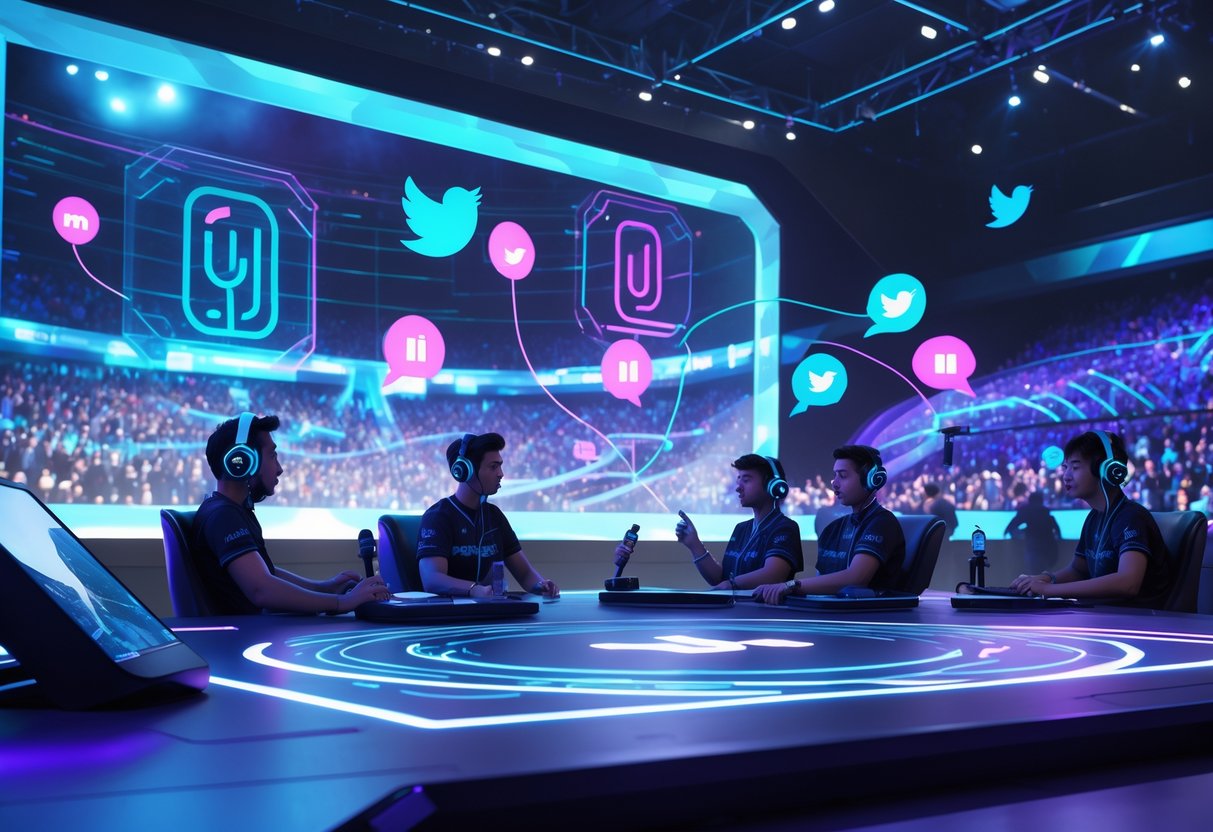
Twitter Spaces is X’s live audio feature. It lets users host real-time voice conversations. Anyone can join as a listener, while hosts choose who gets to speak in these virtual audio chat rooms.
Live Audio Conversations on X
Twitter Spaces creates virtual chat rooms where people talk instead of type.
When someone we follow starts a Space, we see it as a purple bubble above our timeline.
The format feels a bit like a radio show. Hosts steer the conversation, and listeners tune in.
Up to 10 people can speak at once. Two co-hosts can help manage things if needed.
Key features include:
- Real-time voice conversations
- Emoji reactions for listeners
- No time limits on sessions
- Public accessibility for all users
Listeners just tap the microphone icon to request a turn to speak. Hosts decide who gets the mic.
This setup keeps discussions organised and avoids chaos.
The live, unpredictable nature makes conversations feel genuine. Since it’s not pre-recorded, anything can happen.
How Twitter Spaces Differs From Other Platforms
Twitter Spaces stands out from competitors like Clubhouse for a few reasons.
Because it’s built into X, it benefits from the platform’s huge user base and existing connections.
Audio quality usually beats other social audio platforms. Spaces uses advanced compression, so voices sound clear even on shaky internet.
No listener limits exist here. Some platforms cap audiences, but Spaces lets as many people join as want to.
Five emoji reactions called “Twemoijs” let listeners interact without interrupting. You get thumbs up, laughing, shocked, sad, and heart.
Tweet integration is handy. Hosts can pin tweets during the chat, so everyone stays focused on the topic.
Spaces tap into your existing X followers, so you don’t have to start from zero.
Requirements and Accessibility
To start a Twitter Space, you need to meet a few criteria.
You’ll need 600 or more followers to host your own Space.
Accounts with protected tweets can’t create Spaces, but they can join as listeners.
Basic requirements:
- Active X account
- 600+ followers for hosting
- Mobile app for creating Spaces
- Microphone access enabled
Some features have age restrictions. Ticketed Spaces require hosts to be at least 18 years old and have 1,000+ followers.
Anyone can listen to Spaces, no matter their follower count. Public Spaces are open to all.
Safety controls help keep things civil. Hosts can mute, remove, or block participants.
Captions are available for hearing-impaired users. Hosts just enable this when starting their Space.
Mobile and Desktop Experience
You can only create Spaces through X’s mobile apps on iOS and Android.
You can’t start new Spaces from desktop browsers or third-party clients.
To start a Space on mobile:
- Long-press the compose button
- Tap the Spaces icon
- Set up microphone permissions
- Name the Space and go live
Desktop users can listen to Spaces but can’t host them.
To join, click purple bubbles in your timeline or search “filter” in the search bar.
The mobile app gives you full hosting controls. Invite co-hosts, manage speakers, and share your Space with direct messages or tweets.
Scheduling features let you plan Spaces up to 14 days ahead. This helps build hype and gets more people to join.
Once a Space ends, the recording disappears. X keeps copies for 30 days for policy review, but users can’t access finished Spaces.
Twitter Spaces for Esports: An Overview
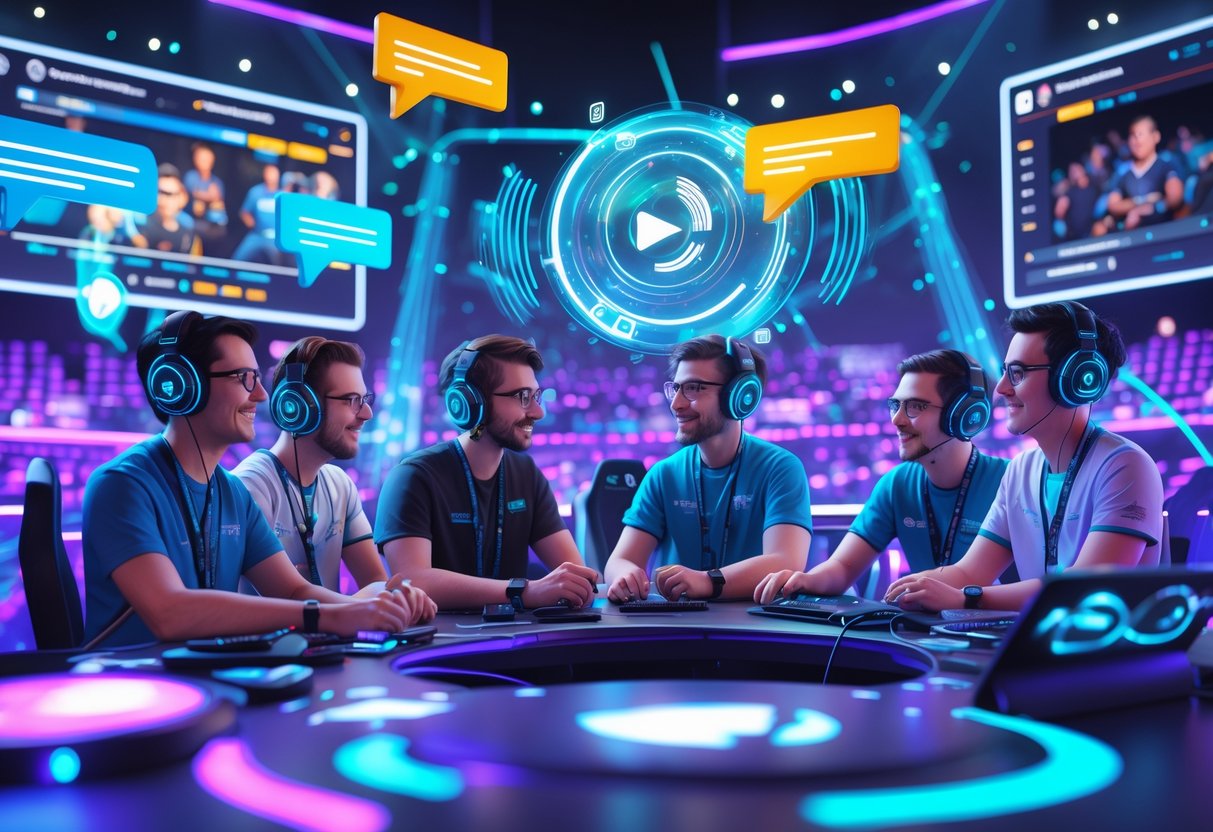
Twitter Spaces has become a powerful tool for esports teams, brands, and content creators to connect with fans through live audio conversations.
These interactive sessions help build brand awareness while creating authentic connections that regular social posts just can’t match.
Why Esports Teams and Brands Use Twitter Spaces
Esports organisations use Twitter Spaces to build stronger relationships with their fans.
Teams often host live discussions after matches to break down plays and give behind-the-scenes insights.
Brand awareness grows naturally when players talk directly to fans.
Listeners get to hear real reactions, not just scripted lines.
Many teams schedule weekly Spaces to talk about upcoming tournaments.
Cloud9, for example, has used Spaces to explain roster changes and strategy shifts.
Sponsors love Twitter Spaces because conversations sound organic.
When a player casually mentions their gaming setup, it feels more genuine than a standard ad.
The platform fits esports perfectly, since most fans already follow teams and players on Twitter.
When favourite accounts go live, purple bubbles show up at the top of timelines.
Popular Esports Use Cases
Post-match analysis sessions are super common. Players and coaches break down recent games, and fans can ask questions on the spot.
Tournament predictions always spark debate and get people talking. Analysts often host Spaces before big events like Worlds or The International.
Quick win: Try joining a few esports Spaces as a listener before hosting your own.
Recruitment announcements work really well. Teams introduce new signings and let fans ask questions directly.
Training camp updates keep audiences in the loop during off-seasons.
Teams share practice highlights and talk about their prep.
Community tournaments get a boost through Spaces. Organisers explain rules and prize pools, helping grassroots competitions gain traction.
Examples of Successful Esports Spaces
Professional League of Legends teams host Spaces during Worlds championship.
Thousands of listeners join to talk match predictions and player performances.
Counter-Strike organisations like FaZe Clan go live during major tournaments.
They run live reaction sessions that often trend on Twitter.
Warning: Some unofficial Spaces claim to feature pro players but don’t. Always check the verified accounts hosting sessions.
Valorant content creators run weekly Spaces about agent meta changes and tournament results.
Sometimes, pro players drop in as surprise guests.
Fighting game community leaders use Spaces to preview tournaments like EVO.
They discuss brackets and spotlight rising players.
Independent esports journalists often interview industry figures in Spaces.
These chats sometimes reveal exclusive info about team changes and tournament plans.
Women’s esports initiatives have used Spaces to talk about representation and career opportunities.
These sessions help build supportive communities inside the larger esports world.
Setting Up Your First Esports Twitter Space
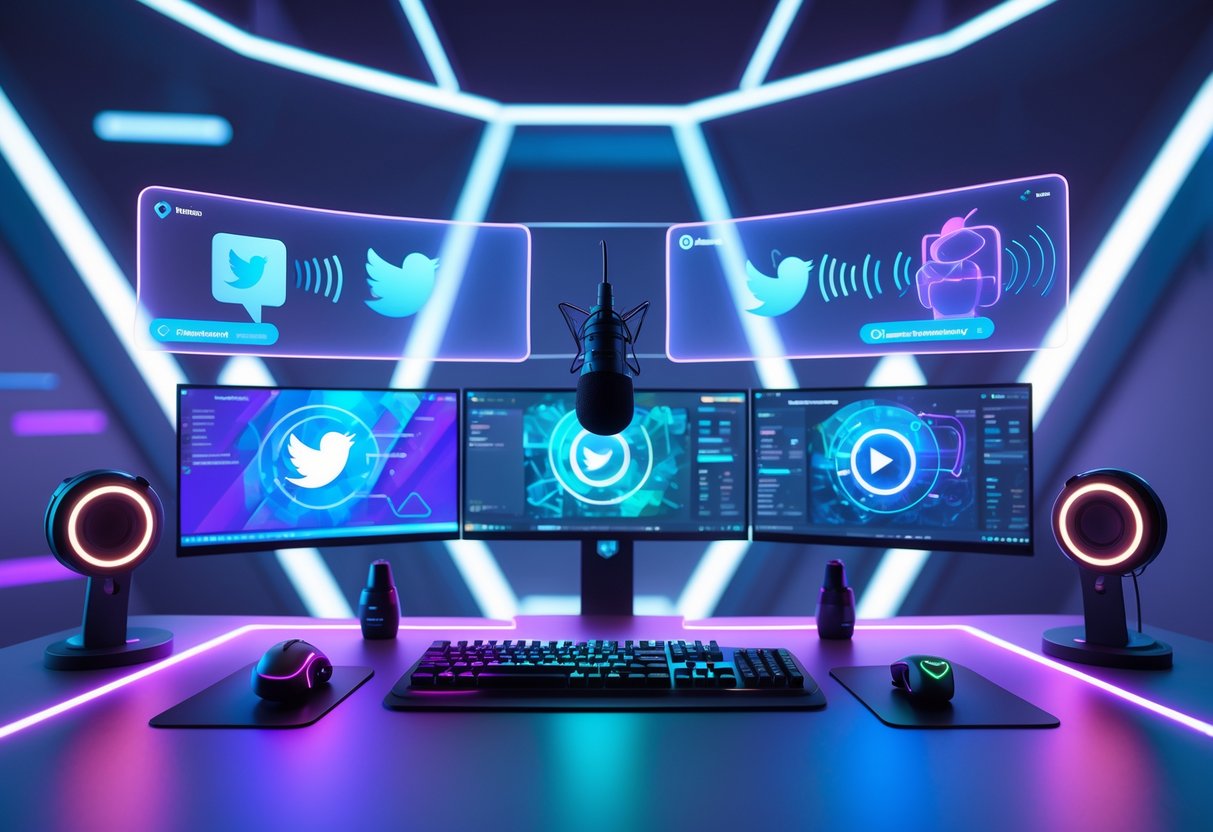
To create your first esports Twitter Space, you’ll want to get comfortable hosting through the Twitter app, write a catchy title and description to attract gaming communities, and schedule your live audio event at a time when people can actually join.
How to Host a Twitter Space
Anyone with a Twitter account can host a Space now, which is great for esports fans looking to grow gaming communities.
Let’s walk through the setup using the Twitter app.
Open your Twitter app and find the blue plus (+) icon at the bottom right.
Tap it and pick “Spaces” from the menu.
You’ll land on the setup screen. Go live right away or schedule your chat for later using the calendar icon.
Key hosting features for esports content:
- Add up to 10 speakers for panel discussions about games or tournaments
- Invite co-hosts to help manage chat during busy gaming events
- Use live captions so international gaming audiences can follow along
- Pin tweets about match results or player updates
Most successful esports Spaces have 2-3 regular speakers chatting about tournament results, player transfers, or game updates.
That keeps the conversation lively but not overwhelming.
Naming and Describing Your Space
You only get 70 characters for your Space title, so make it count.
Focus on a specific esports topic instead of something generic.
Good esports Space titles:
- “Breaking Down Today’s Valorant Champions Match”
- “League of Legends Worlds 2025 Predictions”
- “CS2 Pro Scene Drama: What Really Happened?”
Add up to three topics that match your discussion.
Pick from Twitter’s suggested gaming categories or create custom tags like #ValorantUK or #LeagueAnalysis.
Write a clear description so people know what to expect.
Mention teams, players, or tournaments you’ll talk about.
Example description: “Join us for live reactions to the Fnatic vs G2 match, plus analysis of the current EMEA standings. Bringing on pro player insights and community Q&A.”
Use hashtags like #Esports, #Gaming, and game-specific tags.
This helps Twitter show your Space to the right people.
Scheduling Live Audio Events
Timing matters a lot for esports Spaces. Gaming audiences are global, but tournaments happen at set times.
Try scheduling around major events for the best turnout.
Good times for esports Spaces:
- 30 minutes after a big tournament match ends
- During prime gaming hours (7-11 PM UK time)
- Weekend afternoons when more fans are around
When setting up, tap the calendar icon to schedule your Space.
Pick your date and time, and Twitter gives you a shareable link.
Post the link on your gaming social channels at least a day before you go live.
Tweet it out with match predictions or discussion topics to get people interested.
Pre-promotion ideas:
- Make a simple graphic announcing your Space
- Tweet out a discussion question to spark interest
- Tag relevant esports teams or players (don’t overdo it)
- Share the link in gaming Discord servers where it fits
Consider running weekly Spaces at the same time, like “Monday Night Valorant Chat” or “Weekend Tournament Wrap-ups.”
A regular schedule helps build a loyal audience who knows when to tune in.
Engaging Esports Communities With Live Audio
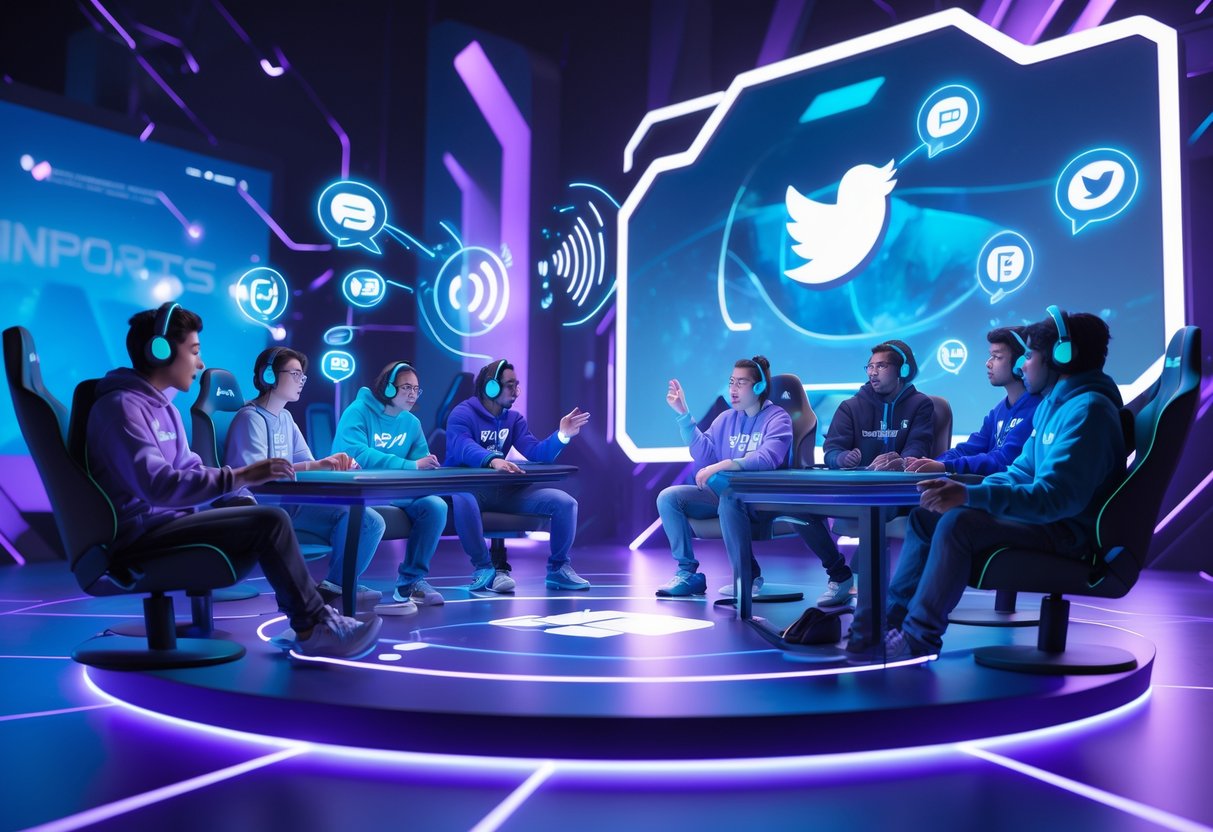
Twitter Spaces brings esports fans, players, and teams together for real-time audio conversations.
These platforms let communities gather for panel chats with pros, interactive Q&As, and instant post-match reactions.
Panel Discussions With Players and Experts
Twitter Spaces has changed how we hear from pro players and experts.
Unlike regular interviews, these live audio chats feel more casual and unscripted.
Setting up good panels takes a bit of planning. Book 2-3 speakers max to keep things on track.
Try mixing perspectives—maybe a player, an analyst, and a coach.
Schedule sessions during peak hours when your community is most active.
Topics that usually work:
- Meta changes and strategy breakdowns
- Behind-the-scenes tournament prep
- Career advice for aspiring pros
- Team dynamics and communication
Audio-only chats encourage honest talk.
Players often share personal insights they’d never say on camera.
James Connolly, a gaming expert, says, “voice-only conversations create a more relaxed atmosphere where pros feel comfortable being authentic.”
Promote your panels early. Tweet the scheduled Space link a day or two ahead.
Pin tweets with speaker bios and discussion topics.
That gets people excited and helps your community plan to join.
Q&A With Fans and Audience Participation
Interactive Q&A sessions on Twitter Spaces build stronger community bonds than text-based chats.
Fans can ask questions with their voice, making conversations feel real.
Structure your Q&A for the best results. Start with 10-15 minutes of prepared topics, then open the floor.
Use the “request to speak” feature to keep things organised.
Moderation keeps things focused. Check speaker requests quickly.
Remind people to ask clear questions.
Have backup questions ready in case things go quiet.
Popular Q&A formats:
- Weekly community check-ins
- Pre-tournament prediction sessions
- Game update discussions
- Skill improvement advice
Make everyone feel included. Greet regulars by name.
Thank people for their questions.
Try recurring segments like “Question of the Week” to keep folks coming back.
Live audio lets fans feel heard.
Unlike Discord text or Reddit threads, these real-time chats offer immediate responses and a natural flow.
Post-Match Reactions and Analysis
Post-match Twitter Spaces really capture the raw emotion and buzz right after big games. These sessions work best if you launch them within 30 minutes of the final whistle, while everyone’s still fired up.
Quick setup matters. Get your Space title and topics ready before the game even ends. Hit “broadcast” as soon as the results are in. The spontaneity pulls in more listeners than planned discussions ever do.
Let immediate reactions take the spotlight. Give fans a chance to vent, cheer, or just be stunned. That unfiltered emotion is what makes these sessions electric.
Once the initial excitement fades, you can dig into tactics and analysis.
Bring in different viewpoints for your post-match breakdowns. Try to include fans from both sides if you can swing it. More perspectives keep the chat lively and way less predictable.
Some classic post-match topics:
-
The moments that swung the game
-
Player highlights and standout plays
-
Coaches’ tactical calls
-
What it all means for tournament standings
Aaron Connolly, who knows his esports stuff, says, “post-match audio discussions capture community energy that written analysis simply cannot match.”
Keep the vibe energetic but respectful. Celebrate great plays from any team. Don’t let toxic comments about players or organisations take over. Set the tone for your community—people usually follow your lead.
Strategies for Boosting Brand Awareness Through Twitter Spaces
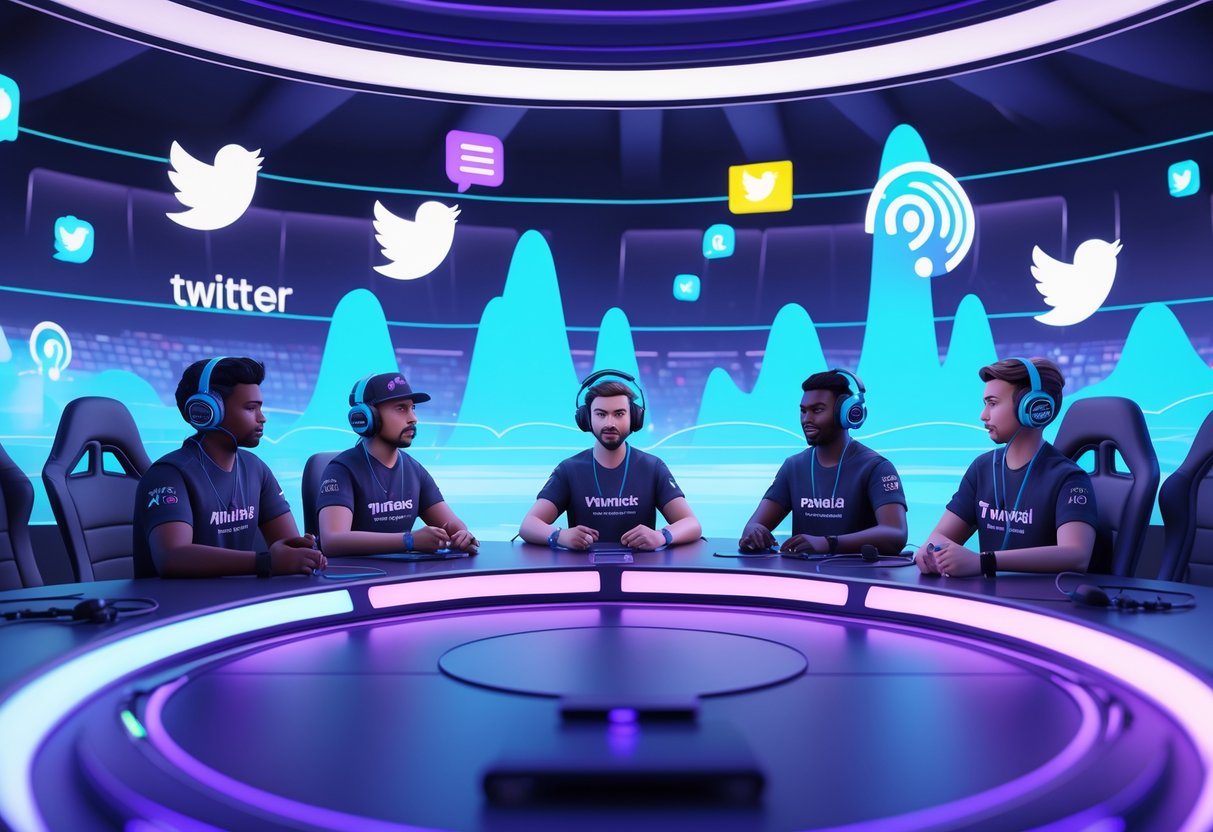
Twitter Spaces gives esports brands a direct line to their communities through live audio. Some of the best results come from strengthening your social media presence and teaming up with streamers or influencers.
Enhancing Social Media Marketing
Honestly, we’d use Twitter Spaces as a go-to for real-time brand conversations. Host weekly sessions so fans can chat about recent matches or upcoming tournaments with your crew.
Set up regular brand update sessions to announce new signings, sponsor partnerships, or tournament entries. These live announcements create a buzz that static posts just can’t.
Run interactive Q&As with your players or coaches. Fans love the behind-the-scenes feel, and these chats build real connections.
Jump into match analysis Spaces right after big games. Break down the key plays and strategies while everyone’s still thinking about them.
Cross-promote your Spaces on platforms like Instagram Stories and TikTok. That way, you funnel your broader following into your Twitter community.
Keep an eye on metrics—listener count, speaking requests, new followers after each Space. That’s how you’ll know what’s working.
Partnering With Influencers and Streamers
We suggest teaming up with esports streamers who already have an active Twitter crowd. Their followers are much more likely to jump into Spaces about competitive gaming.
Pick game-specific influencers who focus on your main titles. If you’ve got a League of Legends team, go for a LoL streamer to help boost your brand.
Co-host tournament previews with popular commentators or analysts. Their expertise, mixed with your team’s inside info, makes for must-listen content.
Invite rising content creators to join as co-hosts. This helps you reach new people and supports smaller creators, which is always a plus.
Try influencer takeovers—let a streamer run your Space for a session. Their followers get introduced to your brand through someone they already trust.
Put together collaborative series with multiple influencers. Chat about industry trends or upcoming events. These ongoing partnerships keep your brand in the conversation long-term.
Promoting Esports Twitter Spaces Effectively

If you want your esports Twitter Space to blow up, you’ll need to promote it smartly and at the right time. The main thing? Build hype and make it easy for both your followers and new fans to find you.
In-App Promotion Tips
Schedule your Space when your audience is around. Esports fans are usually most active at night and on weekends.
Pin announcement tweets to your profile a day or two before going live. Add details like who’s speaking, what matches you’ll cover, or which games are up for analysis.
Use Twitter’s scheduling tools to nudge your followers without spamming them. Send out an initial tease, a reminder on the day, and a “going live soon” update.
Make your Space titles pop with esports keywords. Skip generic stuff like “Gaming Chat”—try “Valorant Champions Analysis with Pro Players” or “League of Legends Patch Discussion.”
Tag esports personalities in your early promo tweets. Pro players, coaches, and analysts often retweet good esports content to their own followers.
Reply to trending esports tweets with info about your upcoming Space. That way, you reach people already chatting about similar stuff.
Cross-Platform Sharing Strategies
Drop your Twitter Space links in Discord servers where esports fans gather. Most gaming organisations have channels just for event announcements.
Share promo content on Instagram Stories and TikTok with esports hashtags. Short video teasers work especially well for building hype.
Coordinate with other social media accounts in your gaming network. Cross-promotion gets you in front of fans who might not follow you on Twitter yet.
Make shareable graphics to announce your Space guests and topics. Visuals tend to get more attention and help cement your brand.
Get involved in esports subreddits by sharing useful stuff related to your Space topic. Build authentic relationships—don’t just drop links and disappear.
Partner up with gaming influencers for mutual promo. They mention your Space, you shout out their content. Win-win.
Driving Attendance and Engagement
Offer exclusive content only available live. Think Q&As, behind-the-scenes stories, or sneak peeks at new game features.
Get interactive before your Space starts. Run polls or ask followers what they want discussed, or which games are on their minds.
Bring in interesting guests who attract their own fans. Pros, coaches, and analysts can really bump up your listener count.
Use countdowns and urgency in your promo. Stuff like “Limited spots” or “Exclusive interviews tonight only” nudges people to join right away.
Stay active during the Space—invite listeners to speak. That community vibe gets people talking and coming back for more.
After each Space, share highlights or key moments. It’s great promo for next time and gives value to anyone who missed out.
Monetisation: Ticketed Spaces for Esports Events
Twitter Spaces lets esports organisers monetise live audio by selling tickets. Hosts set their own prices and keep up to 80% of revenue after platform fees, which makes it a solid choice for workshops, analyst talks, or fan meet-and-greets.
How Ticketed Spaces Work
To run ticketed esports events, you’ll need at least 1,000 Twitter followers and three regular Spaces hosted in the past month. You also need a Stripe account for payments.
Host requirements:
- 1,000+ followers
- Age 18 or older
- Three Spaces in 30 days
- Valid Stripe account
The setup is pretty simple. You pick ticket prices and set quantity limits through Twitter’s interface. Fans buy tickets in the app using regular payment methods.
Twitter handles payments for you. You get up to 80% of ticket sales after app store fees. Payments usually show up 7-14 days after your event.
Pricing Strategies for Esports Audiences
Esports fans want good value, so make sure your prices fit the content. We’d start low to build a crowd, then raise prices once demand grows.
Sample pricing:
- Fan Q&As: £2-£5
- Game analysis: £5-£10
- Pro interviews: £10-£15
- Coaching workshops: £15-£25
Try out different price points for similar events. Many hosts offer early bird discounts or bundle tickets for a series. Think about your audience—young fans might have tighter budgets.
Adjust for region too. UK fans may pay more than those in newer markets, so tweak your prices if you’ve got an international crowd.
Best Practices for Monetising Live Events
Promote your ticketed Spaces at least 48 hours ahead with tweets and free Spaces. This gives people time to plan and builds anticipation.
Make your paid content worth it. Skip generic chats—go for insider analysis, pro player insights, or deep game breakdowns.
Content that tends to sell:
- Match predictions with real reasoning
- Behind-the-scenes team stories
- Technical gameplay breakdowns
- Industry career tips
Connect with ticket holders before the event. Thank them and give a sneak peek of what’s coming. During the Space, focus on their questions first.
Afterwards, if possible, send extra resources or recordings. That kind of follow-up encourages repeat buyers and gets people talking.
Best Practices for Hosting Esports Conversations on Twitter Spaces
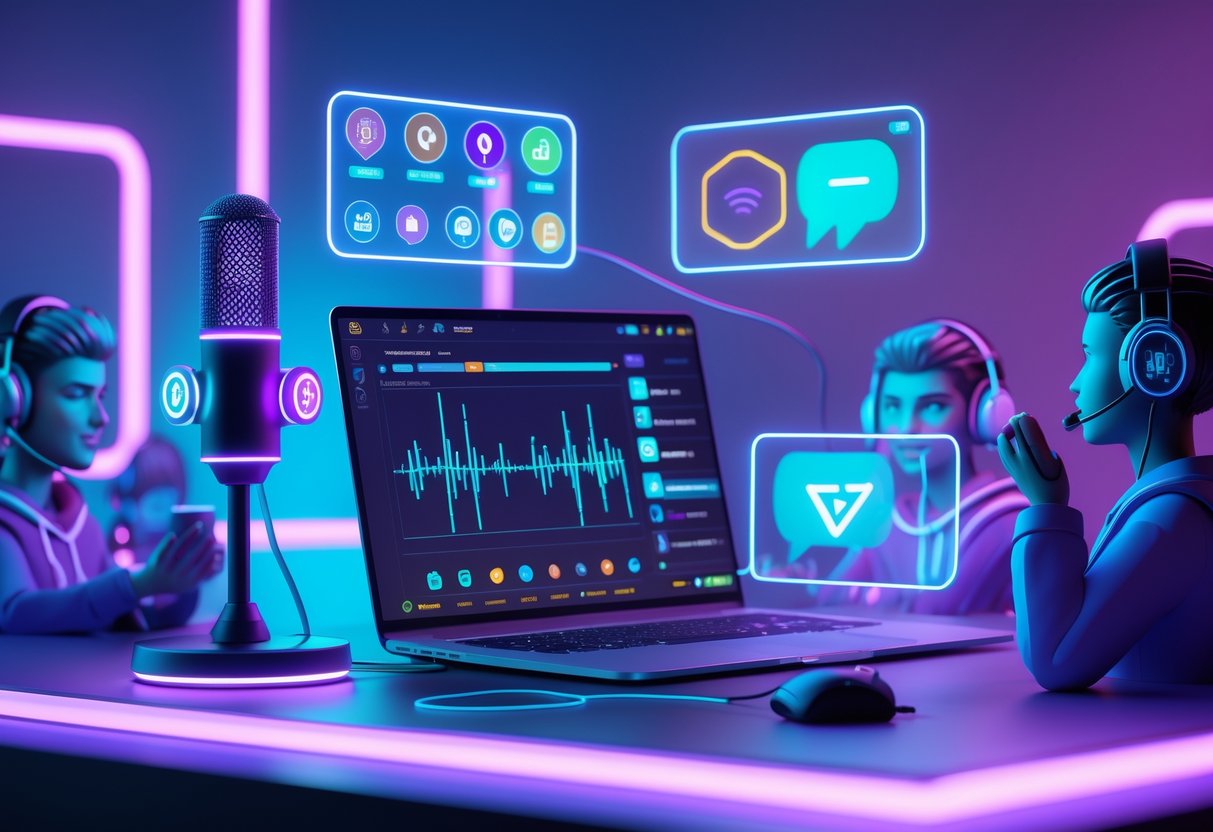
Hosting great esports audio chats takes active moderation, focused topics, and a few tricks to keep your community coming back. If you want a loyal audience, you’ll need to deliver consistent value and handle the wild moments that come with live esports talk.
Moderation and Managing Speakers
Lay out your speaker rules before you go live. We suggest setting boundaries about language, promotion, and topics. Share these in your Space description or right at the start.
Set up a speaker rotation for busy sessions. Limit each voice to 3-5 minutes during peak times. This stops anyone from dominating and gives more people a shot to talk.
Use the co-host feature wisely. Bring in trusted community members or fellow esports fans as co-hosts. They can handle speaker requests while you steer the conversation.
Watch chat requests closely during tournaments or big news. Those moments draw the most speakers, so have co-hosts screen requests to keep things on track.
Kick out disruptive people fast. Don’t be shy about using Twitter’s block and remove tools. Esports debates can get heated, especially when rival teams are involved.
Keeping the Conversation Relevant
Prep 5-7 talking points before you start. Stick to recent tournament results, roster moves, meta changes, or upcoming matches. A loose agenda helps avoid awkward silences.
Share tweets during the chat to give context. Drop recent highlights, player news, or brackets to keep things grounded in what’s happening now.
Guide off-topic speakers back politely but firmly. If someone wanders off into general gaming or personal stories, acknowledge them, then steer it back to esports. Maybe try, “That’s interesting, but let’s tie it back to the competitive scene.”
Host themed Spaces for different games or topics. Run separate sessions for League of Legends, CS2, or Valorant instead of mixing everything together. Focused chats attract focused fans.
Invite knowledgeable guests often. Reach out to analysts, creators, or team reps. Their insight boosts conversation quality and draws a bigger crowd.
Time your Spaces around major events. Hold sessions during tournaments, patch releases, or transfer windows when people are already hyped.
Building Long-Term Community Engagement
Stick to a regular schedule. Weekly Spaces at the same time—like Sunday nights for recaps or Wednesday evenings for mid-week analysis—help set expectations.
Create recurring segments. Try “Prediction Corner” for match picks, “Hot Takes” for spicy opinions, or “Community Questions” to get listeners involved.
Share key discussion points on Twitter after each Space. Tweet out the biggest topics, bold predictions, or hot takes. That keeps the conversation going even after you sign off.
Get to know your regulars. Remember names and what games they love. A bit of personal attention makes people want to come back.
Cross-promote with other esports creators. Guest-host each other’s Spaces, share upcoming sessions, and team up for special event coverage. Working together beats competing for the same crowd.
Record big sessions when you can. Post-tournament reactions or major announcements make great content for anyone who missed out. Share recordings to help your audience grow.
Innovative Content Ideas for Esports Twitter Spaces
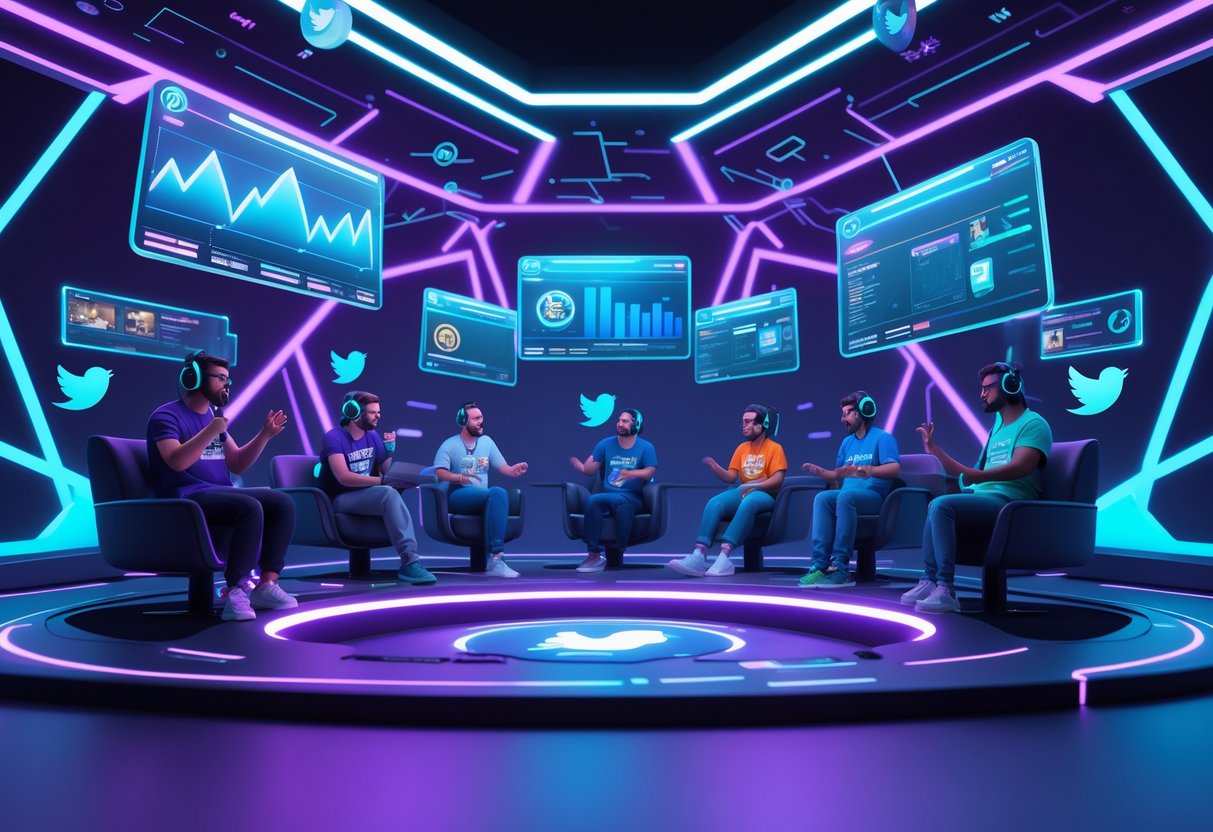
Twitter Spaces gives you a direct line to esports fans, letting you create live audio content that actually feels personal. Match analysis really gets people talking in real time, while behind-the-scenes stories offer fans that exclusive peek they’re always looking for.
Match Previews and Predictions
Match preview Spaces stir up hype before tournaments start. Try going live about 30 minutes before a big match.
Let community members jump in and share their predictions. You can run Twitter polls during the Space to see where everyone stands.
Effective Preview Elements:
- Analysis of team form from recent games
- Player stats and head-to-head numbers
- Map picks and possible strategies
- Injury updates or last-minute roster swaps
Recurring shows like “Sunday Showdown Preview” become something fans look forward to each week. Consistent timing helps people remember when to tune in.
Encourage listeners to use a specific hashtag when sharing their predictions. That way, the conversation keeps rolling even after the Space ends.
Pro tip: Set up a leaderboard for the most accurate predictors. Give a shoutout or a small prize to the leaders—people love a little friendly competition.
Behind-the-Scenes Stories
Fans always want the inside scoop. Share stories from tournament venues, team houses, or even practice rooms.
Talk about the human side of esports. Maybe discuss daily routines, pre-match rituals, or how players handle the pressure.
Valuable Behind-the-Scenes Topics:
- What really goes on during technical pauses
- How teams talk to each other mid-match
- How the venue gets set up behind the scenes
- Player reactions right after a win or loss
Bring in folks who work off-camera. Event organizers, camera operators, and production crew often have the best stories.
Share your own experiences if you attend an event. Describe the atmosphere, the crowd, or any surprises you run into.
Use the co-host feature on Twitter Spaces to bring in guests who were actually there. Their firsthand stories make everything feel more real.
Esports Interviews and Guest Spots
Guest interviews fit perfectly with Twitter Spaces. The audio-only setting usually makes guests more relaxed than being on video.
Mix it up with different types of guests. Players, coaches, analysts, and content creators all see things from their own angle.
Interview Structure That Works:
- Quick intros (2 minutes)
- Chat about recent performance (5 minutes)
- Dive into personal stories or big career moments (8 minutes)
- Open up for audience Q&A (10 minutes)
Have some questions ready, but don’t be afraid to go off-script. Conversations feel more genuine when they aren’t too rigid.
Let audience members ask questions on the spot. The “request to speak” button brings listeners right into the mix.
Quick win: Start with semi-pro players. They’re usually easier to reach than big-name pros and can be just as interesting.
Try to schedule interviews around major tournaments. Post-match chats, when emotions are high, can lead to some of the best content.
Analysing Performance and Growing Your Esports Audience
Your Twitter Spaces data tells you what’s working and what isn’t when you’re trying to connect with esports fans. If you track listener behaviour and tweak your topics to match what people like, you’ll see your esports community grow.
Utilising Space Metrics and Feedback
Twitter gives you basic analytics for every Space you run. The live listeners number shows how many people tuned in during the session. High numbers mean your topic and timing hit the mark.
Recording replays show something different. When people listen after the fact, it means your Space had staying power. Track these numbers week by week to see which topics keep drawing people back.
Speaker participation really matters in esports chats. When listeners jump in to debate or share opinions, your Space feels alive. Count how many people spoke in each session.
Silent engagement counts too. Emoji reactions during playback tell you what moments really landed. If someone drops fire emojis during a clutch play discussion, you know you’re on the right track.
Make a simple spreadsheet to track:
- Live listener count
- Number of speakers
- Recording replays after 24 hours
- Peak emoji activity
Warning: Don’t stress about numbers in your first month. Focus on putting out good content regularly.
Adapting Topics to Audience Interests
Your Space analytics show which topics draw crowds. If your Valorant strategy discussions get 200 listeners and your general gaming chats only pull 50, you know where to double down.
Watch join and leave patterns by noting timestamps. If a bunch of people join at once, maybe someone influential shared your Space. If folks leave in groups, you probably hit a topic that didn’t click.
Quick win: Just ask your audience what they want. Poll your Twitter followers about which tournaments or teams they care about.
Successful esports Spaces usually focus on:
- Live reactions to tournaments
- Player transfer news
- Meta shifts in popular games
- Coverage of different regions
Time your Spaces with major esports events. Go live during or right after a big match and you’ll catch the most passionate fans.
Mix scheduled topics with spontaneous Spaces. Plan a weekly show but stay ready to jump on breaking news when it happens.
Accessibility and Inclusivity in Esports Audio Rooms
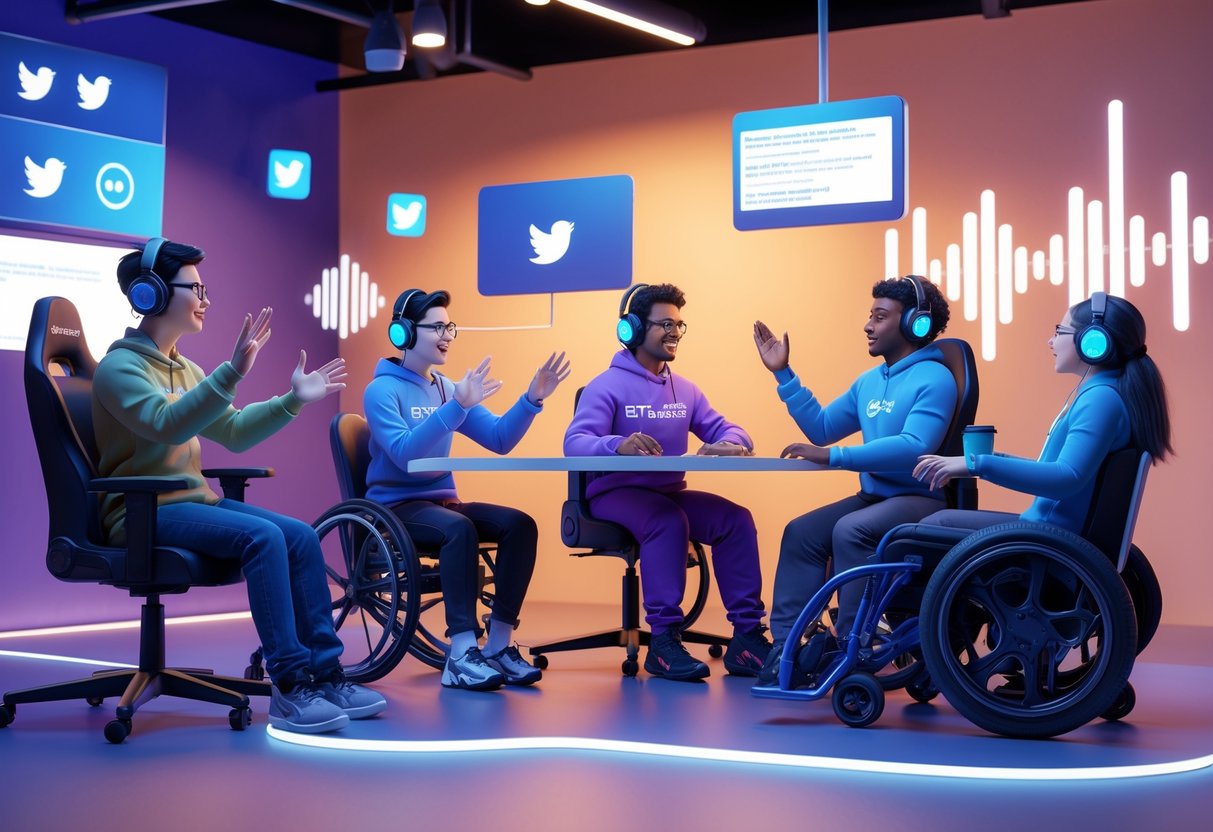
Audio conversations in esports spaces need to work for everyone—no matter their hearing ability, language, or background. Live audio platforms still have a long way to go when it comes to making truly inclusive communities.
Ensuring All Fans Can Participate
Audio-only platforms can make it tough for fans with hearing issues. We need real-time text transcription that turns spoken words into readable text right away.
A lot of platforms now include automated captions for live sessions. Twitter Spaces added live captions, but sometimes they struggle with accents or gaming lingo.
Essential accessibility features:
- Real-time transcription that understands gaming terms
- Visual indicators for when speakers change
- Text-based chat alongside the audio
- Adjustable audio speeds for different needs
Some hosts use a hybrid approach. They’ll repeat key points in the chat as they talk, which helps fans who miss parts of the audio or just prefer reading.
Quick win: Turn on captions before you start your Space—it’s free and it opens the door for more fans.
Screen readers can have a tough time with complicated audio interfaces. Simple navigation and clear speaker labels make things easier for visually impaired listeners.
Language and Cultural Inclusivity
Esports fans come from all over and speak dozens of languages, but most audio rooms stick to English. Lately, more hosts are trying out multilingual approaches.
Some good strategies:
- Rotate languages in the same session
- Community translators who share summaries
- Regional time slots for different language groups
- Explain cultural context for game references
Warning: Automatic translation for live audio still isn’t great with gaming terms or cultural stuff.
A lot of hosts pause between topics for translation or explanations. These breaks give non-native speakers time to catch up.
Culture goes beyond just language. Humor, slang, and favorite games vary a lot by region. The best audio rooms recognize these differences instead of pretending everyone’s on the same page.
Consider bringing in moderators who speak other languages. They can help smooth things over when discussions heat up.
Frequently Asked Questions
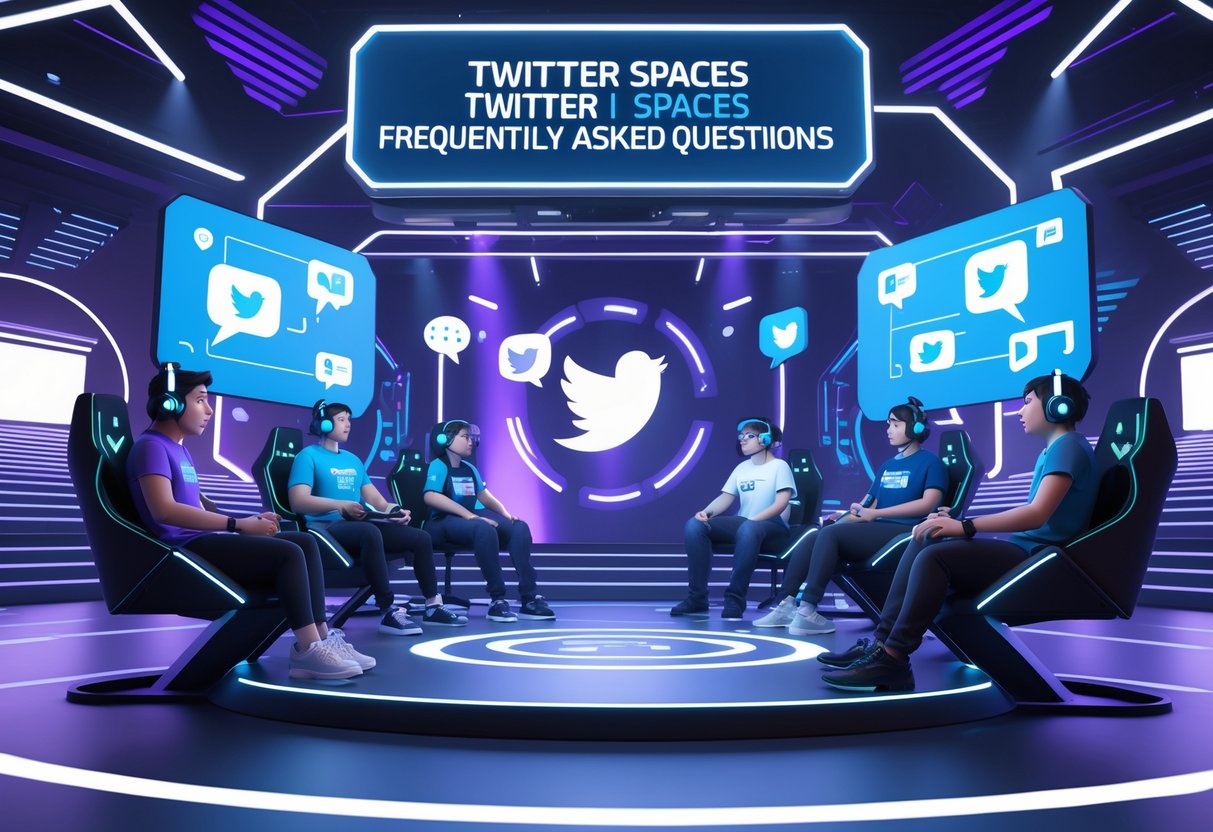
Running esports chats on Twitter Spaces means learning the platform’s features and building a community that actually wants to come back. Whether you’re setting up good audio or teaming up with influencers, these questions tackle the practical stuff behind successful esports content.
How can I host an esports discussion on Twitter Spaces?
Open Twitter and tap the blue plus icon. Pick Spaces from the menu or just hit the mic icon on the main bar.
Give your Space a name like “Pro League Analysis” or “Valorant Tournament Preview.” You get 70 characters, so toss in hashtags like #esports or #gaming.
Add up to three topics that describe what you’ll talk about. Pick gaming categories so other esports fans can find your Space. “Gaming,” “Entertainment,” and specific game titles work well.
Schedule your Space ahead of time instead of going live right away. You can schedule up to two weeks out, which gives you time to spread the word and pull in listeners.
Turn on recording when you set up your Space. That way, you can share highlights later for anyone who missed it live.
What are the best practices for engaging an audience during an esports Twitter Space?
Start with a clear topic and stick to it. Focus on certain games, tournaments, or news—don’t let it turn into generic gaming chatter.
Share relevant Tweets during your Space to back up your points. Save important clips, match results, or announcements ahead of time so you’re not scrambling.
Invite speakers who know their stuff. You can add up to 10 at once and approve listener requests to join in.
Ask direct questions to keep people involved. Try “What did everyone think of that final round?” or “Which team impressed you most this weekend?”
Keep things lively by rotating speakers. Don’t let one person hog the mic for too long.
Could you suggest ways to promote an upcoming esports event on Twitter Spaces?
Tweet about your Space using Twitter’s share feature. It adds a Space card, so people can set reminders.
Send DMs to esports fans, creators, and gaming accounts you know. Personal invites usually get better results than just posting publicly.
Drop the Space link in gaming Discords or Reddit threads where it fits. A lot of esports communities welcome event announcements.
Partner with gaming influencers or esports accounts for cross-promotion. Offer them a speaking spot in exchange for sharing your Space with their followers.
Post about your upcoming Space on Instagram Stories or TikTok, too. List the topic and time to pull in folks from other platforms.
Use hashtags that matter. Stick with #esports, #gaming, and tags for the games or tournaments you’ll cover.
What kind of equipment do I need to create a high-quality Twitter Space for esports commentary?
You really just need your phone to start. The built-in mic works fine for basic chats.
If you want better sound, grab some wired earphones with a mic. Apple EarPods or similar ones cost about £20 and sound way clearer than your phone’s speaker.
If you’re planning to host often, think about a USB mic. The Blue Yeti Nano (about £80) plugs right into your phone with an adapter and gives you pro-level audio.
Make sure your internet is solid before going live. Wi-Fi is usually more stable than mobile data for longer talks.
Find a quiet spot with little background noise. Gaming headsets help block out distractions and keep your voice clear.
Are there any specific community guidelines to follow when discussing esports on Twitter Spaces?
Stick to Twitter’s usual community rules in every Space. Don’t allow harassment, hate speech, or sharing personal info about players or fans.
Keep the chat about gameplay, strategy, and the industry. If you criticize, make it constructive and stick to performance—not personal stuff.
Respect copyright when talking about tournaments. Don’t share pirated streams or encourage others to watch illegally.
Be careful with spoilers. Give folks a heads-up before you talk about big results or outcomes.
Block or mute anyone who disrupts or breaks the rules. As the host, you set the tone.
Don’t spread unverified rumors about roster changes or player details. Stick to official news and credible sources.
How do you collaborate with esports influencers or guests in a Twitter Space?
Reach out to potential guests with a direct message well before your planned Space. Let them know what the topic is, how long you expect it to run, and what you hope they’ll talk about.
If you think a guest can help manage the discussion, go ahead and invite them as a co-host. Co-hosts can approve speakers and share content, but they can’t end the Space or bring in more co-hosts.
Before the event, send your guests a quick outline or some bullet points. That way, everyone can stay focused and actually have something useful to add.
When your guests join as speakers, take a moment to introduce them properly. Maybe mention their background, what they’ve achieved, or just why you think they’re great for this conversation.
Give each guest their own chance to share ideas. Try not to let one person take over the conversation—everyone deserves a say.
After the Space ends, share the recording and thank everyone publicly. People appreciate the recognition, and it helps build connections for next time.

